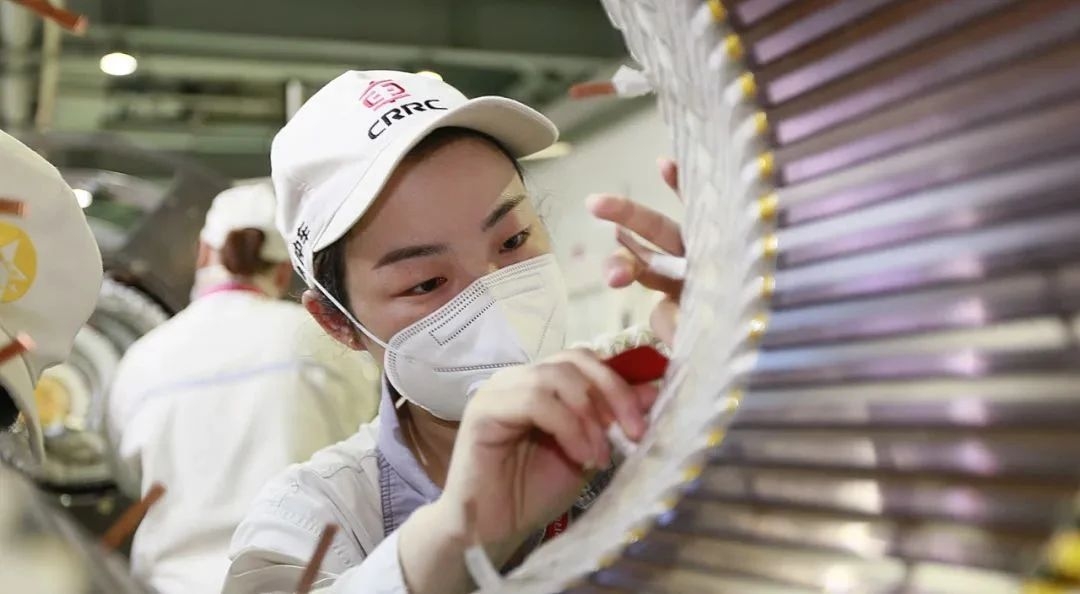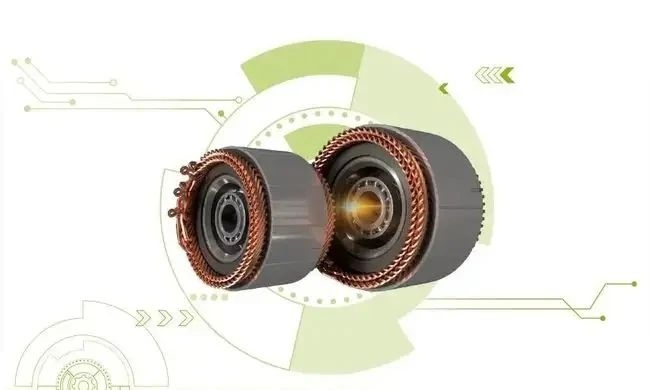The Effect of Iron Core Stress on the Performance of Permanent Magnet Motors
The rapid development of the economy has further promoted the professionalization trend of the permanent magnet motor industry, putting forward higher requirements for motor related performance, technical standards, and product operation stability. In order for permanent magnet motors to develop in a broader application field, it is necessary to strengthen the relevant performance from all aspects, so that the overall quality and performance indicators of the motor can reach a higher level.
For permanent magnet motors, the iron core is a very important component within the motor. For the selection of iron core materials, it is necessary to fully consider whether the magnetic conductivity can meet the working needs of the permanent magnet motor. Generally, Electrical steel is selected as the core material for permanent magnet motors, and the main reason is that Electrical steel has good magnetic conductivity.
The selection of motor core materials has a very important impact on the overall performance and cost control of permanent magnet motors. During the manufacturing, assembly, and formal operation of permanent magnet motors, certain stresses will form on the core. However, the existence of stress will directly affect the magnetic conductivity of Electrical steel sheet, causing the magnetic conductivity to decline to varying degrees, so the performance of permanent magnet motor will decline, and will increase the motor loss.
In the design and manufacture of permanent magnet motors, the requirements for the selection and utilization of materials are getting higher and higher, even close to the limit standard and level of material performance. As the core material of permanent magnet motors, Electrical steel must meet very high accuracy requirements in relevant application technologies and accurate calculation of iron loss in order to meet the actual needs.
The traditional motor design method used to calculate the electromagnetic characteristics of Electrical steel is obviously inaccurate, because these conventional methods are mainly for conventional conditions, and the calculation results will have large deviation. Therefore, a new calculation method is needed to accurately calculate the magnetic conductivity and iron loss of Electrical steel under stress field conditions, so that the application level of iron core materials is higher, and the performance indicators such as the efficiency of permanent magnet motors reach a higher level.
Zheng Yong and other researchers focused on the impact of core stress on the performance of permanent magnet motors, and combined experimental analysis to explore the relevant mechanisms of stress magnetic properties and stress iron loss performance of permanent magnet motor core materials. The stress on the iron core of a permanent magnet motor under operating conditions is influenced by various sources of stress, and each source of stress exhibits many completely different properties.
From the perspective of the stress form of the stator core of permanent magnet motors, the sources of its formation include punching, riveting, lamination, interference assembly of the casing, etc. The stress effect caused by interference assembly of the casing has the greatest and most significant impact area. For the rotor of a permanent magnet motor, the main sources of stress it bears include thermal stress, centrifugal force, electromagnetic force, etc. Compared to ordinary motors, the normal speed of a permanent magnet motor is relatively high, and a magnetic isolation structure is also installed at the rotor core.
Therefore, centrifugal stress is the main source of stress. The stator core stress generated by the interference assembly of the permanent magnet motor casing mainly exists in the form of compressive stress, and its action point is concentrated in the yoke of the motor stator core, with the stress direction manifested as circumferential tangential. The stress property formed by the centrifugal force of the permanent magnet motor rotor is tensile stress, which almost completely acts on the iron core of the rotor. The maximum centrifugal stress acts on the intersection of the permanent magnet motor rotor magnetic isolation bridge and the reinforcing rib, making it easy for performance degradation to occur in this area.
The Effect of Iron Core Stress on the Magnetic Field of Permanent Magnet Motors
Analyzing the changes in magnetic density of key parts of permanent magnet motors, it was found that under the influence of saturation, there was no significant change in magnetic density at the reinforcement ribs and magnetic isolation bridges of the motor rotor. The magnetic density of the stator and main magnetic circuit of the motor varies significantly. This can also further explain the effect of the core stress on the magnetic density distribution and magnetic conductivity of the motor during the operation of the permanent magnet motor.
The Effect of Stress on Core Loss
Due to stress, the compressive stress at the yoke of the permanent magnet motor stator will be relatively concentrated, resulting in significant loss and performance degradation. There is a significant iron loss problem at the yoke of the permanent magnet motor stator, especially at the junction of the stator teeth and yoke, where the iron loss increases the most due to stress. Research has found through calculation that the iron loss of permanent magnet motors has increased by 40% -50% due to the influence of tensile stress, which is still quite astonishing, thus leading to a significant increase in the total loss of permanent magnet motors. Through analysis, it can also be found that the iron loss of the motor is the main form of loss caused by the influence of compressive stress on the formation of the stator iron core. For the motor rotor, when the iron core is under centrifugal tensile stress during operation, not only will it not increase the iron loss, but it will also have a certain improvement effect.
The Effect of Stress on Inductance and Torque
The magnetic induction performance of the motor iron core deteriorates under the stress conditions of the iron core, and its shaft inductance will decrease to a certain extent. Specifically, analyzing the magnetic circuit of a permanent magnet motor, the shaft magnetic circuit mainly includes three parts: air gap, permanent magnet, and stator rotor iron core. Among them, permanent magnet is the most important part. Based on this reason, when the magnetic induction performance of the permanent magnet motor iron core changes, it cannot cause significant changes in the shaft inductance.
The shaft magnetic circuit part composed of the air gap and the stator rotor core of a permanent magnet motor is much smaller than the magnetic resistance of the permanent magnet. Taking into account the influence of core stress, the magnetic induction performance deteriorates and the shaft inductance significantly decreases. Analyze the impact of stress magnetic properties on the iron core of a permanent magnet motor. As the magnetic induction performance of the motor core decreases, the magnetic linkage of the motor decreases, and the electromagnetic torque of the permanent magnet motor also decreases.
Post time: Aug-07-2023






